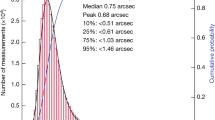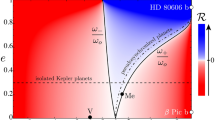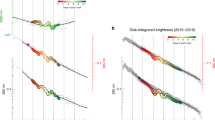Abstract
A FEW years ago Hawkins1–3 demonstrated that Stonehenge had more astronomical significance than previously recognized, but serious criticisms have been raised against parts of his theory. In particular, Atkinson4,5 has challenged Hawkins's basic proposition that the Heel Stone indicated the direction of sunrise on midsummer morning. In this report I offer an improvement to Hawkins's theory, which accommodates this objection, and at the same time I propose an explanation of why the Heel Stone was asymmetrically situated, south of the centre line of the Avenue (see Fig. 1).
This is a preview of subscription content, access via your institution
Access options
Subscribe to this journal
Receive 51 print issues and online access
$199.00 per year
only $3.90 per issue
Buy this article
- Purchase on Springer Link
- Instant access to full article PDF
Prices may be subject to local taxes which are calculated during checkout
Similar content being viewed by others
References
Hawkins, G. S., Nature, 200, 306 (1963).
Hawkins, G. S., Nature, 202, 1258 (1964).
Hawkins, G. S., Vistas in Astronomy, 10, (Pergamon Press, London, 1968).
Atkinson, R. J. C., Stonehenge (Hamish Hamilton, London, 1956).
Atkinson, R. J. C., Antiquity, 40, 212 (1966).
Newham, C. A., The Enigma of Stonehenge (private publication, 1964).
CBS Television, Mystery of Stonehenge (McGraw-Hill, Film Department; New York, 1965).
Author information
Authors and Affiliations
Rights and permissions
About this article
Cite this article
ROBINSON, J. Sunrise and Moonrise at Stonehenge. Nature 225, 1236–1237 (1970). https://doi.org/10.1038/2251236a0
Received:
Revised:
Issue Date:
DOI: https://doi.org/10.1038/2251236a0
This article is cited by
-
Stones, pits and Stonehenge
Nature (1981)
-
Stonehenge I and lunar dynamics
Nature (1977)
Comments
By submitting a comment you agree to abide by our Terms and Community Guidelines. If you find something abusive or that does not comply with our terms or guidelines please flag it as inappropriate.



